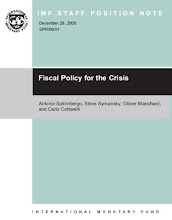With new terror strike in Mumbai terrorist have unveiled their new strategy of taking seize of economic hubs, random killing and fighting pitch battles with police force rather than blowing up locations in quick succession.
The strategy seems to be clearly aimed at denting the normal business life by taking seize of economic hub and preventing it functioning, thus causing enormous damage. These prolonged pitch battles are aimed at ruining the economic life and order as they did it in J&K. This has been extremely successful in long run, when frequent terrorist strikes have killed the economy. By taking aim at major business hotels they have already signaled that Mumbai is not going to remain safe place to do business.
Another aspect of their economic terrorism is taking tourists hostage and attacking tourist hotspots like Colaba. India has already entered in bad map of foreign tourist with one after another city becoming unsafe for them. This will have larger impact on tourism and hospitality industry both in Mumbai and rest of the country.
Further, random targeting of civilians at all possible public place is going to play havoc in the minds of citizens will change the mobility pattern of urban population in India. Any future replication of this Mumbai terror attack in other cities is going create major trouble for economic growth of the country.
The strategy seems to be clearly aimed at denting the normal business life by taking seize of economic hub and preventing it functioning, thus causing enormous damage. These prolonged pitch battles are aimed at ruining the economic life and order as they did it in J&K. This has been extremely successful in long run, when frequent terrorist strikes have killed the economy. By taking aim at major business hotels they have already signaled that Mumbai is not going to remain safe place to do business.
Another aspect of their economic terrorism is taking tourists hostage and attacking tourist hotspots like Colaba. India has already entered in bad map of foreign tourist with one after another city becoming unsafe for them. This will have larger impact on tourism and hospitality industry both in Mumbai and rest of the country.
Further, random targeting of civilians at all possible public place is going to play havoc in the minds of citizens will change the mobility pattern of urban population in India. Any future replication of this Mumbai terror attack in other cities is going create major trouble for economic growth of the country.



